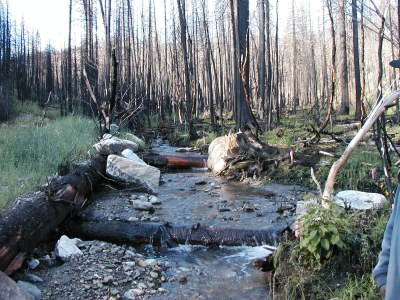The Forestry Best Management Practices (BMP) Notification Law was approved in 1989. The law "encourages the use of best management practices in timber sale planning, associated road construction and reconstruction, timber harvesting, site preparation, and related activities and establishes a process to ensure that information on best management practices is provided to owners and operators engaged in forest practices on private land." The Notification Law text is incorporated into the Timber Slash and Debris Law. The amendments adopted at that time require landowners or operators to notify the Department prior to conducting forest practices on private lands. The DNRC is charged with providing these landowners and operators with information on BMPs which may be delivered through an onsite visit. Notification is served when an application for a Hazard Reduction Agreement is submitted. The DNRC leads field reviews to monitor the application and effectiveness of the BMPs.
What are BMPs?
BMPs are practices that have been adopted to minimize non-point source water pollution from forest practices. While not required by regulation, the use of BMPs has been widely accepted by the forest products industry, family forests, tribal and other agencies. If you own forest land, work in the forest or are interested in forests, there are two publications for your reference: the BMP Handbook Guidelines, and the Montana Forestry BMP Illustrated Guide which contains the handbook guidelines and explains reasons for using them.

The use of voluntary BMPs has proven to be an effective tool in limiting non-point source pollution from forest harvesting activities. The Forestry Practices Program leads a biennial field review of the application and effectiveness of BMPs on selected sites. When the first audit was conducted in 1990, 80% of practices provided adequate protection of water and soil resources. The most recent audit in 2024 found that 99% of practices met or exceeded BMP standards for protection of water and soil resources.
